Landscape Trees
Stories of Trees and Gardens
Landscape Trees are among the most permanent additions you will make to your garden.
Many of them will live well beyond you, so choosing to select a tree for your landscape is a bold move!
Trees can be expensive and slow growing, even when young, so purchasing a tree in itself is a true commitment.
Something a little like marriage!
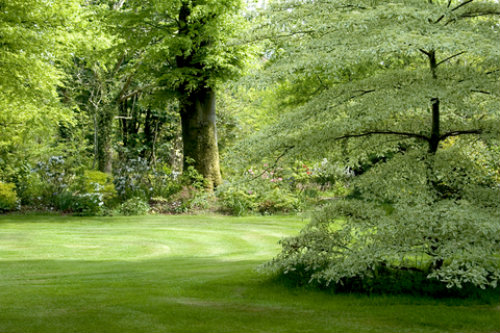
You pick out that beautiful young thing and invest in it, and do the best you can to nurture and feed it.
You trust that over time, your relationship will be rewarded!
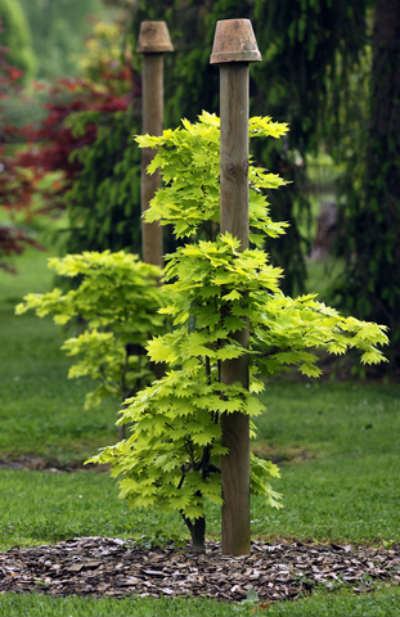
See, just like marriage.
Since you are making such a long term commitment, it behooves one to know what they are doing doesn’t it?!
Before you make that commitment, take time to understand the nature of the choice you are making. Doing this will allow you to confidently begin a long term relationship with the tree of choice!
Evaluating Landscape Trees
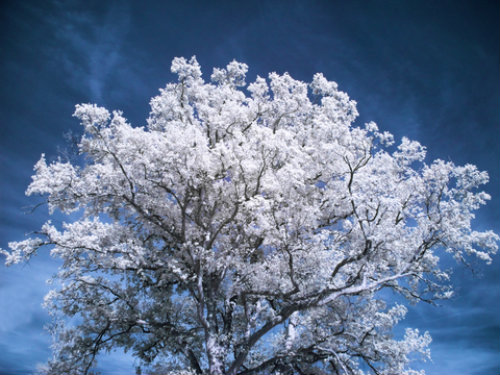
Evaluating your landscape trees for their basic needs and characteristics is the first step in making great choices. Avoid disappointment by learning about each plant’s unique requirements.
Pay Heed to Height and Spread
Trees can grow from 3′ to 100′ feet or more. Some California Redwoods have reached over 300′ tall!
Trees may spread as much as 50′, with some that know no bounds and may grow much broader over time.
Before making any choices regarding landscape trees, be very clear about the space you have available and have an understanding of the mature height and spread of a tree.
Learn how to Promote a Healthy Root System
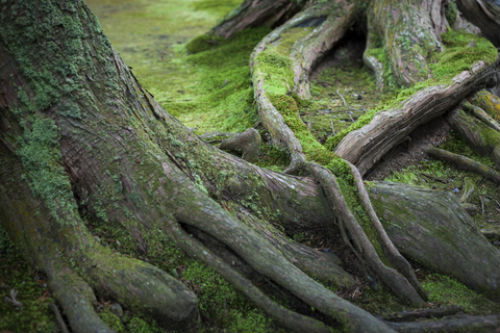
Different trees have different needs in regard to water and feeding.
Some tree roots grow very shallowly and spread along the ground, or need a continuous nutritional supply, while others burrow deep, reaching depths similar to the height of the tree itself, and need little help.
Make sure you understand what you are getting into before forming that long term relationship!
Just like height and spread of a tree above ground, root systems of landscape trees vary greatly in depth and spread. Needless to say, a fifty foot tap root makes a tree difficult to move around! Once it’s planted, it is not likely to move short of bloody murder!
Know Your Tree’s Requirements
Climate is everything to a tree. Trees that are out of their comfort zone do not do well! So understand the preferred planting zone for your landscape tree choices.
Understand such things as the amount of sun a tree needs, the preferences of the tree for wet or dry soils, acid or alkaline soil, and humus content. Each of these pieces of information are critical to the health and well being of both the tree itself and its plethora of neighboring plants.
Get Your Trees in Shape
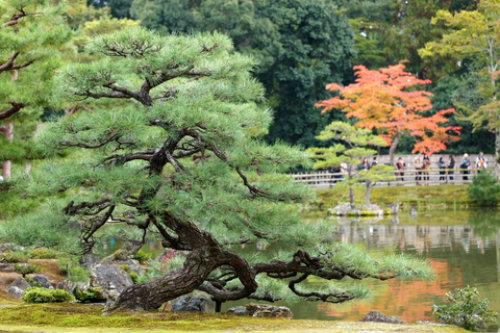
Like people, trees come in all shapes and sizes! Different shapes and sizes of landscape trees will perform different functions and add different dimensions to your garden.
Evergreen trees and deciduous trees have opposite effects in the garden. The shape of a tree may range from fan shaped to columnar, to conical, to rounded, to horizontal, to weeping, and each brings its uniqueness to your garden.
Match the trees you choose to the mood of your garden in order to create the best impact.
Round, broad shapes tend to make great background trees, while horizontally branched trees, trees with crooked branches, and weeping trees tend to perform the prima dona role in your garden. Use shape and size to your advantage when choosing a permanent resident for your garden.
For Every Tree there is a Season
Landscape trees respond differently to seasonal conditions, bringing depth and variety to your garden throughout the year.
Every tree has a season where it is at it’s best.
Find out what the special characteristics of your landscape tree choices are before you plant and exploit them in your garden design.
Dramatic bark, unusual leaves, outstanding fall color, interesting flowers, attractive berries and spectacular new growth are all factors that can affect the way your tree shines during any season. Know these characteristics and highlight them during their most alluring seasons.
The Cast of Characters
Landscape Trees can play three basic roles within your garden design. Depending upon the size of your garden and the preferred garden style, the roles may change.
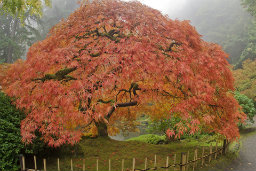
The Prima Donas – Specialized Trees
These trees demand notice, and are most often used as focal points or dramatically presented groupings. They are the stars of the show, and they know it. They will typically be the center of attention for much of the garden.
…
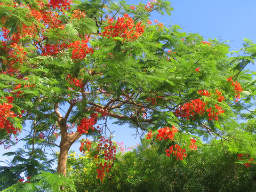
The Supporting Cast – Ornamental Trees
As with any cast of characters, some trees play important roles, but may not hog the stage the way that the Prima dona does. These trees have beautifully ornamental characteristics that demand notice at some times of the year, usually due to color, texture or bark, berries and fruit. These beautiful additions help reinforce mood when used repetitively, as groupings, or as primary players in a garden bed.
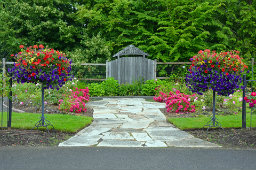
The Backdrop – Background Trees
These trees are the workhorses of the garden. They provide structure, boundaries, screening, and backdrop for their more flashy companions, as well as a canopy or grounding point for other plant inhabitants.
In the smallest of gardens, these background trees are likely either on neighbors properties or are part of the natural surroundings within which we place our gardens.
Other elements of the garden, such as garden walls, fences, or large shrubs may fulfill this role when space is at a true minimum.
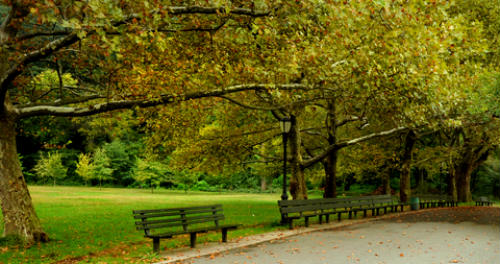
Doing your homework and knowing what the trees you purchase will provide over the long term is one of the most important and most overlooked areas of garden design.
Homeowners tend to find a young, beautiful tree in a garden nursery and lug it home without first understanding it’s nature and disposition.
This results in an ugly murder, divorce, or at best separation, once that same homeowner discovers that the tree is too large or too demanding for the garden space!
Take the time to know your medium when you are designing a garden and your results will be a long, happy relationship with your landscape trees!
(Related: Landscape Plants – How to Design Your Way to a Beautiful Garden)
